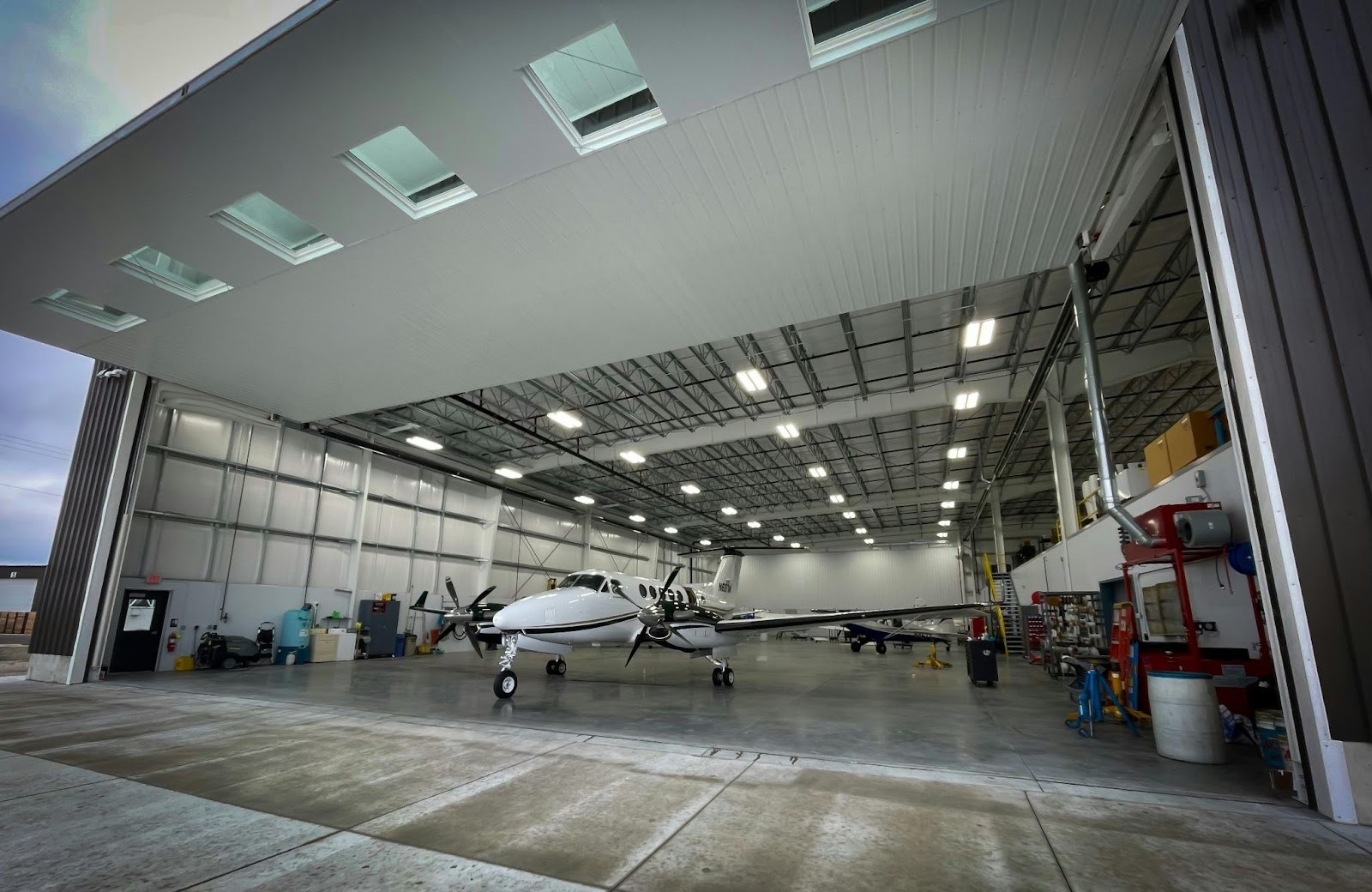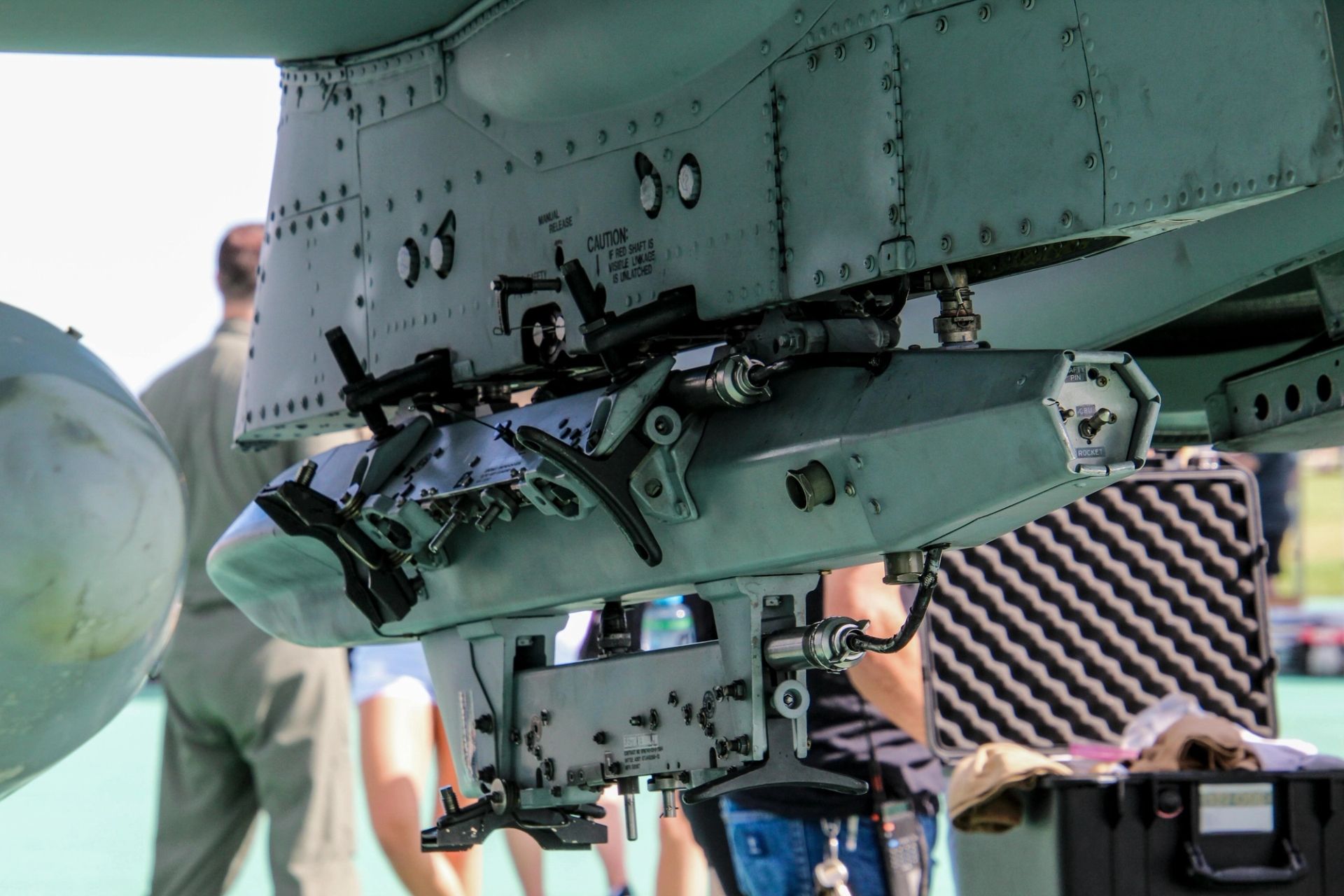
Smarter email, faster business.
How Aviation Companies Can Leverage AI to Enhance ERP Analytics
March 20, 2025
Aviation companies rely on ERPs to manage operations, but traditional systems are falling short. AI-driven ERP analytics is picking up the slack. From predictive maintenance to truly efficient, real-time decision-making, AI can make your operations smarter and more cost-efficient. Find out how leading companies are using AI today to enhance their ERP analytics.
Enterprise resource planning (ERP) systems keep aviation companies running, handling fleet operations, maintenance schedules, compliance, and more. But as airline operations grow increasingly complex, traditional ERP analytics often fall short. That’s where AI steps in, making ERP systems smarter, faster, and more predictive.
In aviation, where every delay, inefficiency, and maintenance hiccup costs millions, AI in ERP analytics helps airlines save money and safeguard business resiliency. The ability to make real-time, data-backed decisions lowers costs, reduces disruptions, and improves fleet performance.
This article breaks down how aviation companies can use AI in ERP analytics, from predictive maintenance to fraud detection, while tackling the challenges of AI adoption head-on.
The role of ERP analytics in aviation
ERP analytics refers to the data-driven insights extracted from ERP systems, helping businesses streamline operations, optimize resource allocation, and make better informed decisions. In aviation, ERP analytics plays a pivotal role in managing complex workflows, regulatory compliance, and asset utilization.
How aviation companies use ERP analytics
- Fleet management: Airlines rely on ERP analytics to monitor aircraft utilization, schedule maintenance, and track fuel efficiency. AI-powered ERP can improve inventory rotation, for 50-100% improved asset turnover per year and 30% improved fleet availability.
- Inventory tracking: AI-driven ERP analytics improves spare parts management, reducing excess stock by up to 40% while helping ensure critical components are always available (Iotone).
- Maintenance scheduling: Fleets using ERP systems with predictive analytics can see a 15-30% cost reduction by optimizing maintenance, reducing downtime, and increasing labor output (McKinsey & Company).
- Compliance and regulatory reporting: AI-enhanced ERP automates regulatory reporting, helping airlines remain compliant with aviation authorities. Streamlining these workflows can deliver major cost savings, as administrative overhead (document handling and other manual processes) accounts for 40% of all compliance costs (Globalscape).
With AI-driven enhancements, ERP analytics in aviation is evolving from reactive decision-making to predictive intelligence, transforming how airlines manage operations.
How AI in ERP analytics enhances aviation operations
AI is revolutionizing ERP analytics by introducing automation, predictive capabilities, and real-time insights. Many aviation companies are already harnessing AI ERP systems for improved efficiency and cash flow.
Automating data processing
AI eliminates the need for manual data entry, reducing human errors and achieving data accuracy rates of over 99%. AI ERP systems can process vast amounts of operational data such as flight schedules, fuel usage, and ticket pricing, all in real time to identify inefficiencies and optimize resource allocation.
Predictive maintenance
Aircraft maintenance is one of the most significant costs in aviation. AI ERP analytics can analyze sensor data and predict potential failures before they occur, leading to fewer maintenance-related delays and optimized part replacement cycles.
According to a 2022 McKinsey study on travel airlines, 60% of all flight delays are caused by controllable, MRO-related factors (McKinsey & Company). Even a small improvement in on-time performance can deliver major wins for revenue, operational continuity, and customer loyalty.
Some sources predict up to 30% reduction in all maintenance-related delays by implementing a predictive, data-driven system (AAA Support).
Fuel efficiency analysis
AI-powered ERP systems use machine learning to analyze flight paths, weather patterns, and aircraft performance, helping airlines reduce fuel costs by 1-3% through route optimization, translating into tens of millions of dollars in savings per year for large carriers (Honeywell Aerospace technologies).
Beyond flight analysis, AI can further reduce fuel costs by closely tracking fleet wear and tear. With AI, organizations can choose the optimal, most cost-efficient moment to replace or purchase new aircraft, opting for newer, greener models that can reduce fuel consumption by 25% (McKinsey & Company).
AI-driven forecasting and decision-making
One of the biggest advantages of AI in ERP analytics is its ability to predict outcomes and automate strategic decision-making. AI algorithms analyze historical and real-time data to forecast revenue, optimize ticket pricing, and enhance overall financial planning.
Revenue forecasting
Traditional revenue forecasting relies on historical trends, which can be inaccurate during economic downturns or industry disruptions. ERP AI systems improve accuracy significantly, using machine learning to analyze demand fluctuations, competitor pricing, and external market factors.
For companies not using AI-powered forecasting, roughly 50% of expendable purchases go to waste due to poor forecasting and subsequent flawed planning (Forbes).
Adopting an AI solution clearly improves the bottom line, although not all solutions are created equal. McKinsey has found that testing different AI models can yield incremental gains of nearly 10% in additional planning accuracy (McKinsey & Company).
Dynamic pricing
Airlines have moved beyond traditional static pricing models, using AI-enhanced ERP analytics to adjust ticket prices in real time based on demand, seat availability, and market conditions. And customers are taking note, tracking fare fluctuations, setting up alerts, and waiting for price drops before booking.
AI-powered ERP systems are monitoring these evolving consumer behaviors. Using deep reinforcement learning (RL) to track customer shopping patterns, airlines alternate between showing high and low prices throughout sales periods to maximize revenue, a more effective approach than gradually raising air fares near departure dates.
With ERP AI analytics, airlines can identify and adjust to demand shifts in real-time and make price adjustments accordingly, setting them at alternating price points instead of relying on a predictable linear increase. This model adapts to erratic consumer behavior, increases fare revenue, and reduces forecasting errors (Science Direct: Engineering Applications of Artificial Intelligence).
Operational decision-making
ERP AI analytics enables airlines to automate operational decisions, such as adjusting staffing levels during peak seasons or rerouting aircraft in response to weather disruptions. These capabilities significantly reduce inefficiencies and improve overall profitability.
For MRO workflows alone, this improved decision-making can reduce operational expenses by 15-30% and significantly reduce delayed or grounded flights.
Process automation and efficiency improvements
AI-driven ERP analytics doesn’t just enhance decision-making—it also streamlines operations by automating repetitive tasks to reduce human workload and increase worker productivity.
Task and process mining
ERP AI systems utilize process mining to analyze how workflows are executed and identify bottlenecks.
A 2023 McKinsey & Company study estimates that 60-70% of workers’ time could be automated using present generative AI capabilities (McKinsey & Company: Economic Potential of Generative AI). Automating manual and repetitive tasks reduces administrative burden, allowing aviation professionals to focus on higher-value work.
For example, MRO technicians and other knowledge workers spend up to 20% of their time processing RFQs, calling other shops for spare parts, and searching for information (McKinsey & Company: Economic Potential of Generative AI). AI automation frees up hundreds of hours per worker per year.
Fraud detection and financial security
Financial fraud is a growing problem in aviation, where massive transactions flow through ERP systems daily. AI-driven analytics can flag suspicious activity in real time, spotting duplicate invoices, unauthorized account access, and spending anomalies before they become a cost hindrance.
McKinsey estimates AI-powered fraud detection in financial services will soon be a $3 billion market (McKinsey & Company: Driving Impact at Scale from Automation and AI) for aerospace companies, handling everything from fuel contracts to maintenance payments and any other activities that require financial oversight.
AI also makes financial audits faster and cheaper. Automated systems can cut audit costs by up to 35% while improving accuracy (McKinsey & Company: Driving Impact at Scale from Automation and AI). For aviation companies, this means fewer manual reviews and more reliable financial controls.
Regulators are cracking down, and compliance failures are expensive. ERP AI systems reduce risk by continuously monitoring transactions, minimizing the risk of accidental oversight.
Automating regulatory compliance
Aviation companies operate under strict regulatory requirements, and failure to comply can result in heavy fines. AI-integrated ERP analytics automates compliance tracking by monitoring real-time data against regulatory frameworks for more accurate reporting and enhanced audit readiness.
Challenges and considerations in adopting AI-driven ERP
Despite the straightforward benefits of using an AI-driven ERP, implementation can be anything but. Onboarding an ERP system with AI capabilities has several considerations to address:
Data integration
Many aviation firms and businesses in general still rely on legacy ERP systems that are not built for AI integration. Migrating data from outdated systems to AI-powered ERP platforms can be complex and time-consuming, requiring significant IT investment.
Cybersecurity
AI-powered ERP systems analyze massive amounts of sensitive data, making them a target for cyberattacks. Without proper security protocols, AI-driven insights could be vulnerable to data breaches and unauthorized access.
Implementation costs
While AI-driven ERP systems offer long-term cost savings, the initial investment is higher than traditional ERP implementations. While the efficiency gains are undeniable, some companies struggle with the upfront costs.
Workforce adaptation
AI automation changes the way aviation professionals interact with ERP systems. Companies must invest in AI training programs to help employees adapt to new workflows and maximize the benefits of AI-driven ERP analytics.
Although challenges still persist, strategic planning, proper implementation, ongoing training, and consistent usage can help aviation firms successfully integrate AI into their ERP systems.
Trends in AI-driven ERP for aviation
The aviation industry is evolving rapidly, and AI-powered ERP analytics will continue to drive innovation in the coming years. From predictive intelligence to automated workflows, AI is transforming how airlines and aerospace companies manage their operations.
As technology advances, ERP systems are becoming more adaptive, responsive, and capable of handling the complexities of modern aviation.
Here are some key trends shaping the future of AI-driven ERP in the industry.
AI-powered digital twins
Digital twin technology allows aviation companies to create real-time virtual models of their operations, including aircraft performance, airport logistics, and maintenance cycles. These AI-enhanced simulations integrate real-world data from ERP systems, enabling airlines to predict failures, optimize fuel consumption, and improve asset utilization before making costly real-world decisions.
By using AI-driven ERP analytics, digital twins can model everything from air traffic flow to parts wear-and-tear, helping maintenance teams make proactive adjustments.
This capability reduces downtime, extends equipment lifespan, and helps simplify compliance with evolving regulatory standards. As AI algorithms become more advanced, digital twins will play an even greater role in aviation efficiency, minimizing operational risks and enhancing safety.
Real-time analytics dashboards
AI-enhanced ERP systems are moving towards self-service analytics, where decision-makers can access real-time, AI-generated insights through intuitive dashboards. These systems process vast amounts of operational and financial data in seconds, eliminating the need for manual reporting and enabling instant, informed decision-making.
Flight operations teams can use these dashboards to monitor fuel efficiency, adjust maintenance schedules dynamically, and reallocate crew resources based on demand fluctuations. Predictive analytics further enhances these capabilities by flagging potential disruptions—such as weather-related delays or mechanical issues—before they escalate. The ability to see and act on this information in real time allows aviation leaders to improve efficiency, reduce costs, and enhance overall performance.
Cloud-based AI ERP systems
As more aviation companies transition from hybrid and on-premises ERP solutions to cloud-based platforms, AI-driven analytics will become even more scalable, accessible, and cost-effective. Cloud-based AI ERP platforms offer:
- Lower infrastructure costs by reducing the need for expensive on-premise hardware
- Faster data processing speeds for real-time analytics and automation
- Easier system updates and security enhancements to keep up with compliance regulations
Cloud adoption enables seamless integration with other AI-powered tools, allowing aviation firms to deploy machine learning models for predictive analytics, automated maintenance scheduling, and fraud detection. With AI advancements continuing to evolve, cloud-based ERP will serve as the foundation for more agile and intelligent aviation operations.
Frequently asked questions
What’s the difference between AI and ERP?
ERP (Enterprise Resource Planning) is the system that runs the backbone of business operations, tracking inventory, managing finances, scheduling maintenance, and compliance. It collects and organizes data across departments, keeping everything structured and accessible.
AI (Artificial Intelligence) analyzes massive amounts of data, automates routine tasks, and identifies patterns that would take humans much longer to detect.
In aviation, AI-driven ERP can predict maintenance issues before they cause delays, optimize fuel usage, and flag unusual transactions in financial records.
Are aviation ERPs outdated?
It depends on the ERP. Some aviation companies are still running on legacy ERP systems that were built decades ago and struggle to keep up with modern demands. These older systems can be slow, rigid, and difficult to integrate with newer technologies, making them feel outdated.
But not all ERPs are stuck in the past. Many aviation companies use modern, cloud-based ERPs that are constantly updated, scalable, and designed to handle complex operations like fleet management, regulatory compliance, and financial tracking.
The difference comes down to whether a company has invested in keeping its ERP current or is relying on an aging system that no longer meets its needs.
Will AI take over ERPs?
AI and ERP experts believe that both technologies will continue to coexist. AI automation is designed to work in tandem with ERPs to increase efficiency and provide deeper insights.
AI enhances ERP functionality by automating repetitive tasks, analyzing vast datasets in real time, and improving decision-making through predictive analytics. However, ERPs serve as the central system for managing core business operations, ensuring compliance, and maintaining structured workflows.
Rather than replacing ERPs, AI augments them by streamlining processes like financial reporting, inventory tracking, and maintenance scheduling.
As AI capabilities advance, ERP systems will become more adaptive, reducing manual intervention and enabling organizations to respond more proactively to operational challenges.
The future of ERP isn’t about any AI takeover; it’s about ERP systems getting smarter, faster, and more efficient thanks to AI.
AI-powered ERP analytics: the future of aviation efficiency
AI-driven ERP analytics is already transforming aviation, driving efficiency, reducing costs, and improving decision-making at every level. Airlines that integrate AI-powered systems gain operational precision, optimize maintenance, and enhance financial oversight—turning complex data into actionable insights that improve profitability.
Fuel efficiency, compliance management, and fraud detection are no longer challenges that require manual oversight. AI-driven automation leads to smoother workflows, stronger security, and more reliable forecasting, allowing aviation companies to operate with greater agility and control.
The future of aviation isn’t about reacting to problems—it’s about anticipating them. AI-powered ERP analytics equips airlines with the intelligence and automation needed to do so and maintain competitiveness in a challenging industry. The shift is already happening. Those who invest now will lead the way.
Stay ahead of the curve with AI-powered ERP analytics. Book a call with ePlaneAI to unlock smarter decision-making, tighter controls, and the operational agility your aviation business needs to lead the future.
Aviation Maintenance Trends That May Gain Momentum in Uncertain Circumstances
Aircraft are staying in service longer, supply chains are a powder keg, and the tech is evolving overnight. Discover the maintenance trends gaining momentum and what they mean for operators trying to stay airborne and profitable.

September 4, 2025
How ePlaneAI Can Help You Create an Aviation Sales Accountability Plan
Aviation sales need accountability more than ever. See how ePlaneAI helps airlines, MROs, and suppliers create data-driven sales accountability plans that boost performance, align incentives, and drive measurable growth.

September 1, 2025
Aircraft Part Shipping Strategies That Work for Your Business
From urgent AOG shipments to oversized engine freight, better aircraft part shipping strategy matters. Learn the most effective ways to move high-value aviation parts safely, quickly, and cost-efficiently.

August 27, 2025
How to Use AeroGenie to Streamline Procurement Reporting in Aviation
What makes AI tools understand human language? It’s not magic—it’s NLP. Learn how NLP works, where it's going, and how it's changing the way we query and build reports with AI.
